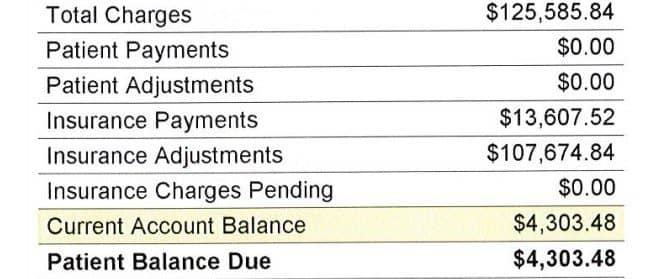Most Deadly Illegal Drugs in US
Illegal drugs continue to have a devastating impact on individuals, families, and communities in the United States. The use and abuse of these substances not only pose significant health risks but also contribute to crime, addiction, and social instability. This article provides a brief overview of some of the most deadly illegal drugs in the US.
A brief overview of the topic and the impact of illegal drugs in the US
Heroin: Heroin is an opioid drug derived from morphine. It is highly addictive and can be injected, smoked, or snorted. Heroin overdose deaths have been increasing dramatically in recent years, driven in part by the influx of dangerous synthetic opioids like fentanyl.
Cocaine: Cocaine is a powerful stimulant that comes from the coca plant. It can be snorted, smoked, or injected. Cocaine can cause severe health problems, including heart attacks, seizures, and strokes. It is highly addictive and can lead to a dangerous cycle of dependence.
Methamphetamine: Methamphetamine, also known as meth, is a highly addictive stimulant that can be smoked, snorted, or injected. Methamphetamine abuse can cause severe physical and mental health problems, including tooth decay, paranoia, and hallucinations.
Fentanyl: Fentanyl is a potent synthetic opioid that is up to 100 times stronger than morphine. It is often mixed with other drugs and is a significant contributor to the opioid overdose crisis in the US. Fentanyl is extremely dangerous and can quickly lead to overdose and death.
Synthetic Cathinones (Bath Salts): Synthetic cathinones, commonly known as bath salts, are a group of human-made stimulant drugs. They can cause severe agitation, hallucinations, and paranoia. Long-term use can result in chronic physical and mental health problems.
It is important to note that the use of any illegal drug carries inherent risks and can have severe consequences. This article provides a general overview of some of the most deadly illegal drugs in the US, but it is not an exhaustive list. It is crucial for individuals to seek help and support if they or someone they know is struggling with drug addiction.
Opioids
1. Prescription Opioids
Prescription opioids, such as oxycodone, hydrocodone, and morphine, are powerful painkillers commonly prescribed to relieve severe pain. While they can be effective when used properly under medical supervision, they also carry a high potential for misuse and addiction. According to the Centers for Disease Control and Prevention (CDC), more than 232,000 people died in the United States between 1999 and 2018 due to prescription opioid overdose.
2. Fentanyl and Synthetic Opioids
Fentanyl, a synthetic opioid that is up to 100 times more potent than morphine, has become a significant concern in recent years. It is often mixed with other illegal drugs like heroin or cocaine, which can lead to unpredictable and deadly outcomes. The overdose death rates involving synthetic opioids, including fentanyl, have skyrocketed in the past decade.
3. Heroin and its potency
Heroin is an illegal opioid that is derived from morphine. It is typically sold as a white or brown powder or as a black, sticky substance known as “black tar heroin.” Due to its highly addictive nature, heroin poses significant risks to users. It is often cut with other substances, such as fentanyl, which increases its potency and the likelihood of overdose. According to the National Institute on Drug Abuse (NIDA), heroin-related overdose deaths have been on the rise in recent years.
It is crucial to understand the dangers associated with these deadly illegal drugs. The opioid epidemic has had a devastating impact on individuals, families, and communities across the United States. Efforts to address this crisis have focused on increasing access to addiction treatment, implementing harm reduction strategies, and enhancing law enforcement efforts to disrupt the illicit drug trade.
By raising awareness about the most deadly illegal drugs, it is hoped that individuals can make informed decisions and seek help if they or someone they know is struggling with addiction.
Stimulants
Stimulant drugs are known for their ability to increase alertness, attention, and energy. However, some stimulants can also have dangerous and deadly effects. Here are three of the most deadly illegal stimulant drugs in the United States.
1. Cocaine
Cocaine is a powerful stimulant derived from the coca plant. It is typically snorted, smoked, or injected. Cocaine users experience a euphoric rush and increased energy, but these effects are short-lived. Cocaine can have serious negative health effects, including heart problems, stroke, and seizures. Overdosing on cocaine can be fatal, as it can cause heart failure or respiratory arrest.
2. Methamphetamine
Methamphetamine, also known as meth, is a synthetic stimulant. It is usually smoked, snorted, or injected. Methamphetamine use can lead to addiction, severe dental problems (known as “meth mouth”), skin sores, and hallucinations. Prolonged use of methamphetamine can cause severe damage to the brain, heart, and other organs. Overdosing on methamphetamine can result in heart attack, stroke, or organ failure.
3. Bath Salts and Synthetic Cathinones
Bath salts and synthetic cathinones are synthetic stimulant drugs that are chemically similar to amphetamines. They are typically sold as a white powder or crystals, and can be ingested, injected, or inhaled. These drugs can cause extreme agitation, paranoia, hallucinations, and delirium. The use of bath salts and synthetic cathinones has been linked to violent behavior, self-harm, and even suicidal tendencies. Overdosing on these drugs can lead to seizures, kidney failure, or heart problems.
It is important to note that the use of illegal drugs, including stimulants, is highly dangerous and can have serious consequences. Seeking help from medical professionals, counselors, or support groups is crucial for individuals struggling with addiction to these substances. Education and prevention efforts are also necessary to inform the public about the dangers of these deadly illegal drugs.
Depressants
1. Benzodiazepines
Benzodiazepines are a class of psychoactive drugs primarily used to treat anxiety disorders, insomnia, and seizures. However, when misused or taken without a prescription, they can have severe effects. These drugs depress the central nervous system, slowing down brain activity and inducing sedation. In large doses, benzodiazepines can cause respiratory depression, coma, and even death. Commonly known brands in this category include Xanax and Valium.
2. Barbiturates
Barbiturates, also known as downers, are central nervous system depressants used to treat anxiety, insomnia, and seizure disorders. However, they have a high potential for abuse and addiction. Overdosing on barbiturates can lead to respiratory depression, extreme drowsiness, confusion, impaired coordination, and even coma. Long-term use can result in memory loss, decreased cognitive function, and physical dependence. Popular examples of barbiturates include Amobarbital and Pentobarbital.
3. GHB (Gamma-Hydroxybutyric acid)
GHB, often referred to as the “date rape drug,” is a potent central nervous system depressant. It is commonly abused as a party drug due to its euphoric and sedative effects. In high doses, GHB can cause unconsciousness, seizures, respiratory depression, and coma. Overdosing can be life-threatening, as it may lead to difficulty breathing, loss of consciousness, and eventual death. GHB is a clear liquid, often sold in small plastic bottles or as a powder.
It is important to note that all of these depressant substances are highly addictive and have potentially lethal side effects. The misuse of these drugs can have severe consequences on physical and mental health, as well as on relationships, work, and overall quality of life.
If you or someone you know is struggling with drug abuse or addiction, seeking professional help from medical and mental health experts is vital. There are numerous resources available to assist individuals in overcoming these challenges and regaining control of their lives.















